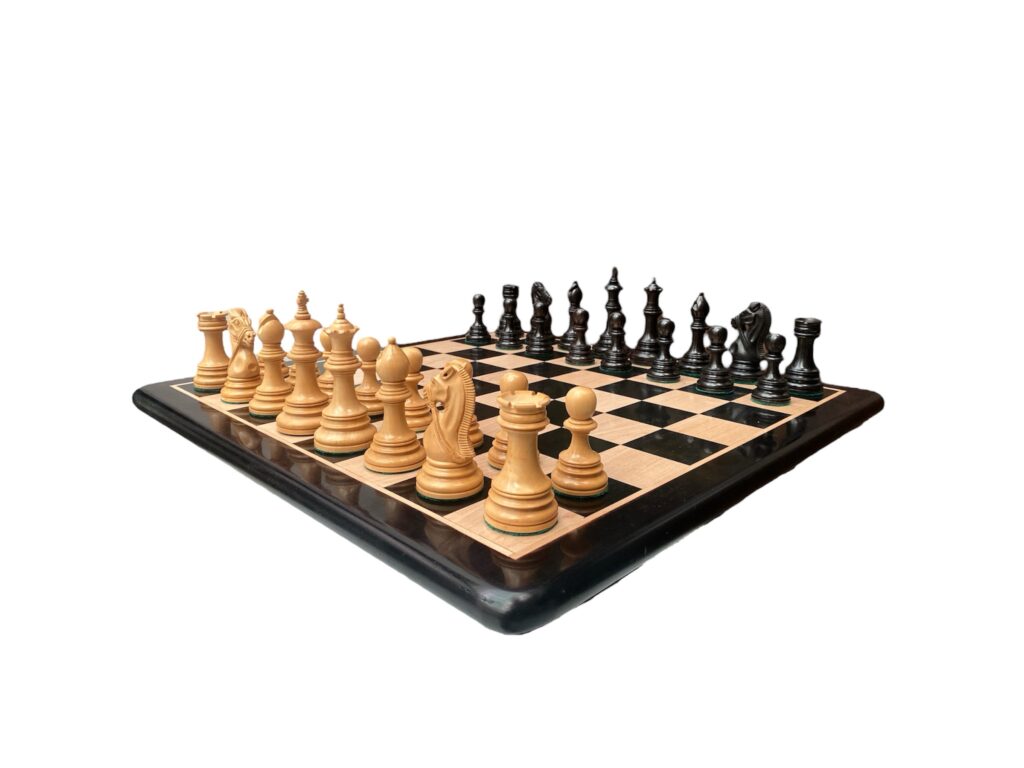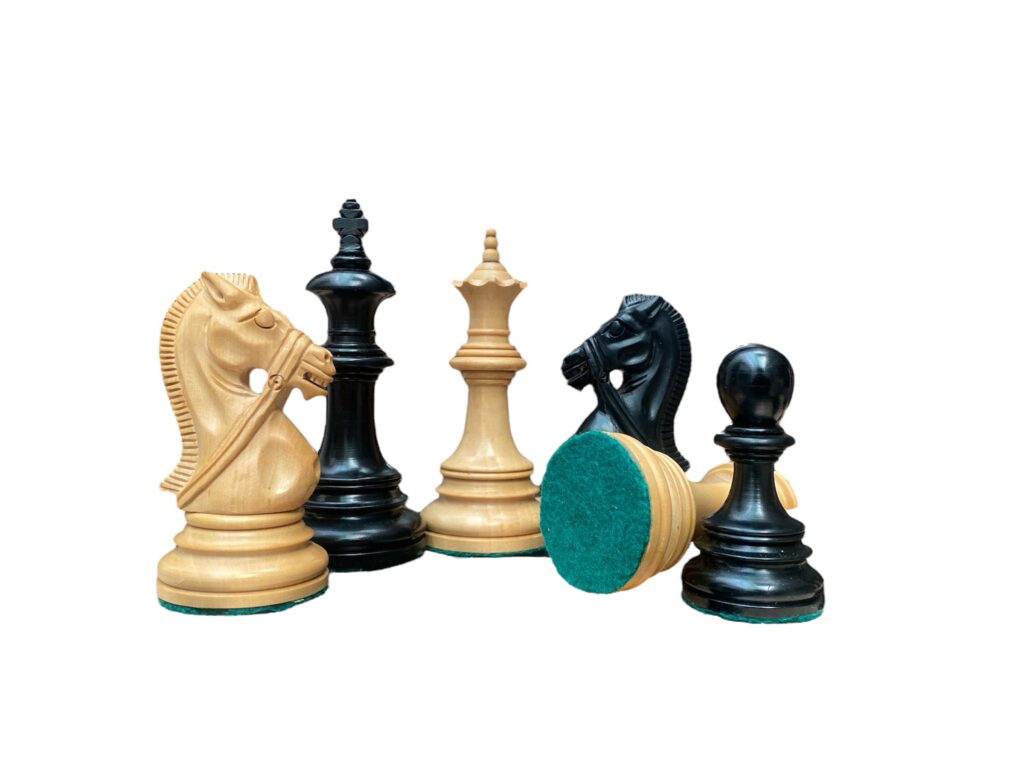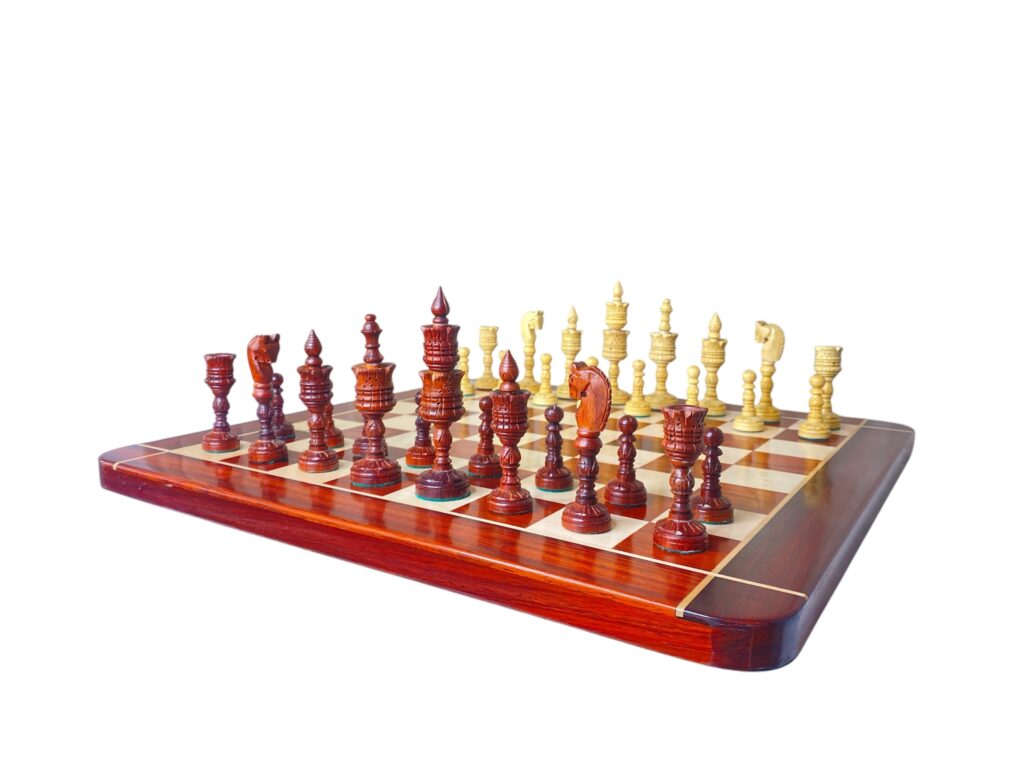Flat 30% OFF Use Code FLAT30
Flat 15% OFF Use Code STORE15
Flat 40% OFF Use Code FLAT40
COD Available
Flat 30% OFF Use Code FLAT30
Flat 15% OFF Use Code STORE15
Flat 40% OFF Use Code FLAT40
COD Available
The game of chess has a rich and varied history that dates back over a millennium, with origins tracing back to the 6th century CE in northern India. Known as Chaturanga, it was a strategic war game that was later transmitted to Persia, where it became known as Shāh, meaning “king.” As chess spread across the globe through trade and conquest, its pieces were made from various materials, including ivory, metal, and glass, reflecting the resources available in different cultures.
Throughout its evolution, the materials used in chess sets have gradually changed, shaped by the evolving aesthetics and practical considerations of players. However, the transition from the luxurious and often expensive materials to more accessible options saw wooden chess sets rise in prominence, particularly in competitive play. The tactile quality of wood provides a certain warmth and symmetry in contrast to artificial materials, which have become common in the modern era.
Wood has always held a special place in the hearts of chess enthusiasts. It is not merely a practical choice but a cultural symbol that embodies tradition and craftsmanship. The artistry involved in crafting wooden chess pieces can elevate the game into an experience that is both visually striking and tactilely satisfying. Numerous cultures have their distinct styles, contributing to the variety of wooden chess sets available today. For instance, the Staunton design, developed in the 19th century, remains the standard for tournament play, emphasizing the importance of wood in official contexts.
This lasting appreciation for wooden chess sets can be attributed to their aesthetic appeal, durability, and the traditional values they represent. Despite the advent of modern materials like plastic and resin, the wooden chess set remains the favored choice in formal tournament settings, signifying a blend of history and artistry that continues to be cherished by players around the world.

Wooden chess sets possess a unique aesthetic appeal that elevates the game beyond mere competition. The craftsmanship involved in creating these sets is often reflected in their intricate detailing and the quality of the materials used. High-quality wood, such as walnut or mahogany, not only adds to the visual beauty but also showcases the skilled artisanship behind the product. The elegance of a wooden chess set can be a significant factor for players participating in tournaments, as it creates an inviting atmosphere that enhances the overall experience of the game.
In terms of tactile benefits, wooden chess pieces offer a distinct feeling that plastic alternatives often fail to replicate. The weight of wooden pieces contributes to a sense of solidity and reliability that can positively affect a player’s confidence and focus during a match. When players handle these pieces, they often appreciate the smooth texture and natural grain of the wood, which varies from piece to piece. This variation adds an element of character to each set, making it unique and personal to the owner.
Moreover, the sound produced when moving wooden pieces across the board can provide sensory feedback that enriches the player’s experience. The satisfying clack of a wooden knight being placed down can create an audible connection to the game, which is often absent when using plastic pieces. As players immerse themselves in the tactile and auditory layers of engagement, they may find that their concentration improves, enabling them to perform better in competitive scenarios. This combination of aesthetic beauty and tactile satisfaction explains why many chess enthusiasts prefer wooden sets, particularly in tournament settings.

Wooden chess sets are renowned for their durability and longevity, qualities that have made them a favored choice among chess enthusiasts and tournament players alike. Unlike plastic or composite materials that can wear down and lose their appeal over time, well-cared-for wooden chess pieces can last for generations while maintaining their structural integrity and aesthetic charm. The natural properties of wood, including its sturdiness and resilience, contribute significantly to the overall lifespan of these sets, allowing them to withstand the rigors of frequent play.
When comparing wooden chess sets to those made from alternative materials, it becomes evident that wood offers a distinct advantage. For instance, plastic chess pieces, while economical, may become brittle with age or discolor due to exposure to light and heat. In contrast, high-quality hardwoods such as maple, walnut, and rosewood are less prone to these issues. These woods not only endure physical stress better but also develop a rich patina over time, enhancing their appeal and making them highly desirable among collectors.
The maintenance of wooden chess sets is an essential aspect for ensuring their durability. Regular polishing with wood-specific products can help protect the surface from scratches and moisture, preserving the quality of the finish. Additionally, players should clean the pieces gently to avoid any buildup of dirt or grime that could diminish their aesthetic. Storing wooden chess sets in a temperature-controlled environment away from direct sunlight will also prevent warping and fading. By committing to proper care and upkeep, enthusiasts can enjoy their wooden tournament sets for many years, taking full advantage of their enduring qualities.

The choice of chess set can have significant emotional and psychological implications for players engaged in competitive tournaments. Many players often develop a strong emotional connection to their wooden chess sets, viewing them not merely as game pieces but as extensions of their personality and strategy. The quality of materials in a wooden chess set can profoundly influence a player’s mindset, enhancing their engagement during play. The tactile nature of wood offers a satisfying experience that not only makes the game visually appealing but also elevates the player’s sense of seriousness and commitment to the competition.
Using a well-crafted wooden set can instill a sense of pride and confidence in players. Renowned chess champion Anatoly Karpov has noted, “The feel of a quality wooden set in my hands allows me to focus better. It feels more personal.” Such sentiments highlight how the material quality can enhance focus and concentration, crucial Elements for success in tournaments. When a player is comfortable and confident with their chess pieces, it can lead to better decision-making and a more strategic approach to the game.
Moreover, the rituals associated with setting up a beautifully crafted wooden chess set can act as a form of mental preparation. Players often emphasize how these rituals contribute to a calm and focused state of mind, allowing them to embrace their competitive spirit fully. The feeling of connecting with a well-made chess set can be a psychological advantage, often translating to improved performance during matches.
In testimonials, many top players emphasize their preference for wooden sets, citing not only aesthetic appeal but also the psychological benefits that accompany them. As chess continues to evolve, the enduring popularity of wooden chess sets serves as a testament to their importance not just as game pieces, but as crucial elements that enhance the overall competitive experience.
For Buy Premium and Quality Chess Click Here – https://bosshandicrafts.com/shop/